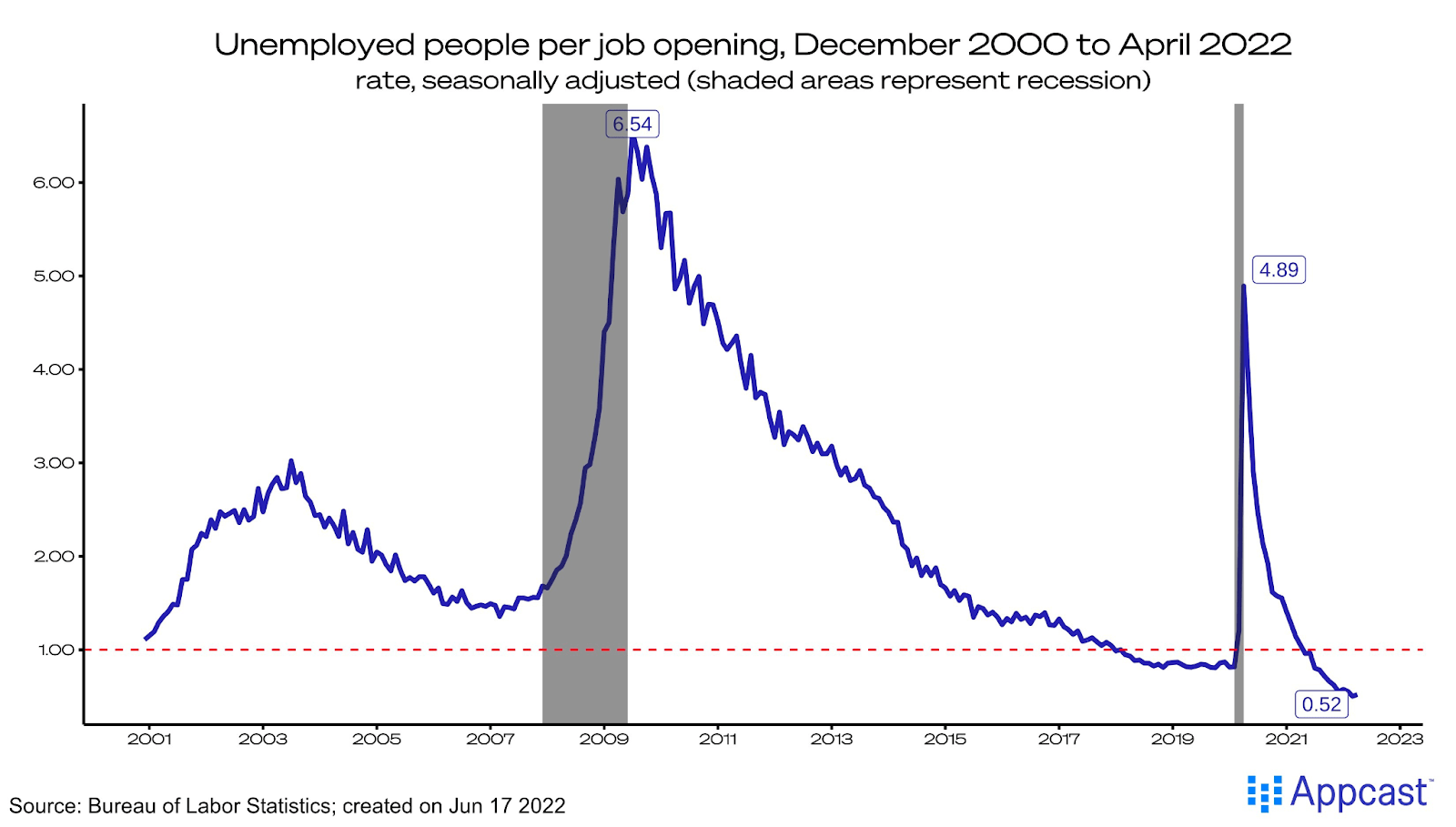The current labor market is often described as “tight,” and it may be hard to visualize what that really means. Considering the ratio of unemployed people to job openings gives a clearer picture of exactly how tight or slack the labor market is.
We can create this ratio by dividing the unemployment numbers from the Current Population Survey (CPS) by the job openings data from the Job Openings and Labor Turnover Survey (JOLTS), both from the BLS.

When the ratio rises, as it did at the onset of the COVID-19 pandemic, hiring becomes easier. There is relative slack in the market at this time, as supply (unemployed people) is far outpacing demand (job openings). At the critical point of 1.0, there is one job for every unemployed person in the economy. Anything lower than 1.0 signals a landscape in which there are more job openings than unemployed people, a tight labor market. Our current labor market is relatively anomalous; there have not been many recorded instances of a ratio under 1.0 and all have occurred in the past four years.
The consistent dip below 1.0 since mid-2021 signals an incredibly tight labor market. If job openings begin to cool, or the number of unemployed people rises, this ratio would increase. Until that occurs, we will continue to be in the midst of a very challenging hiring landscape.







